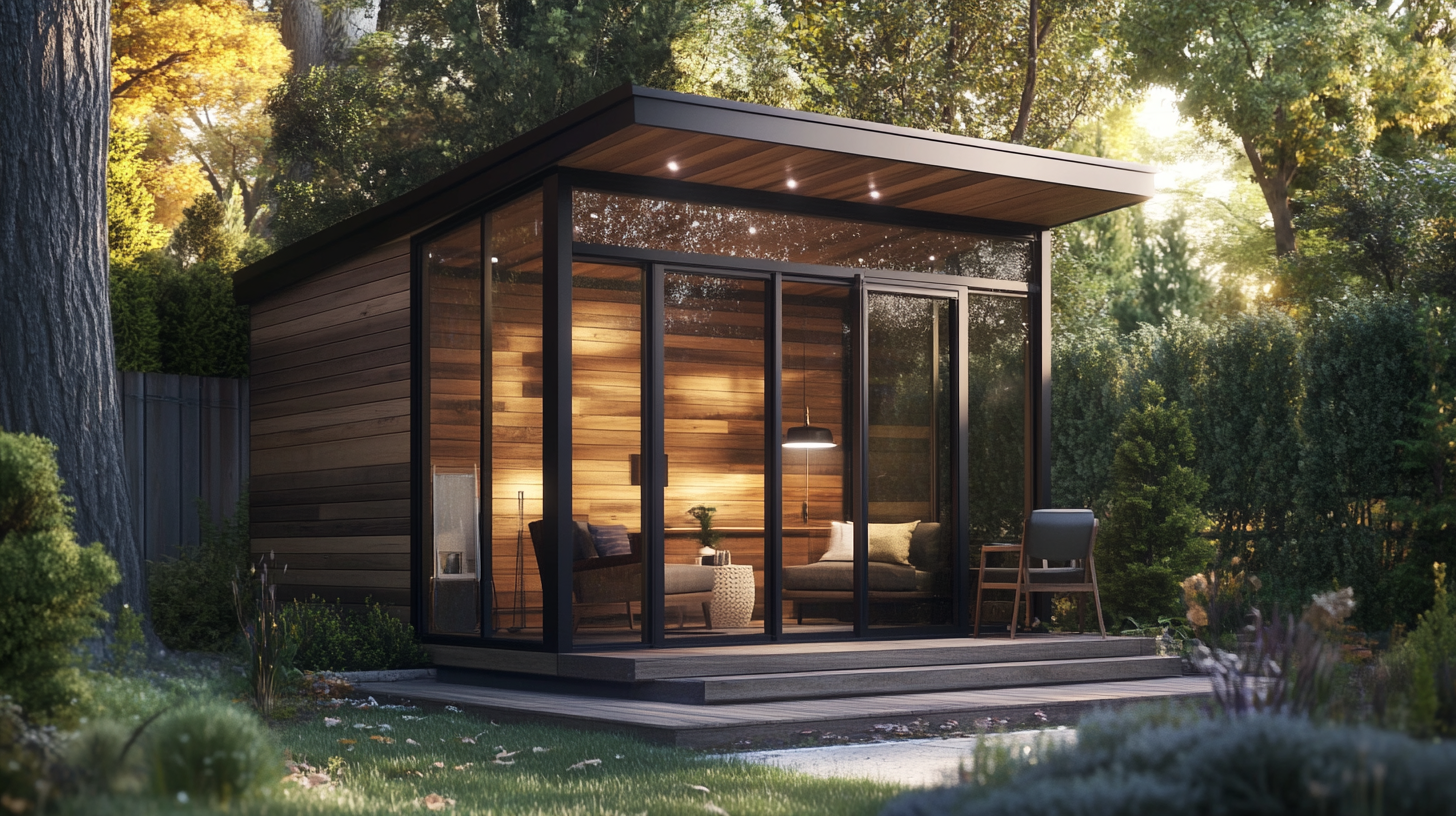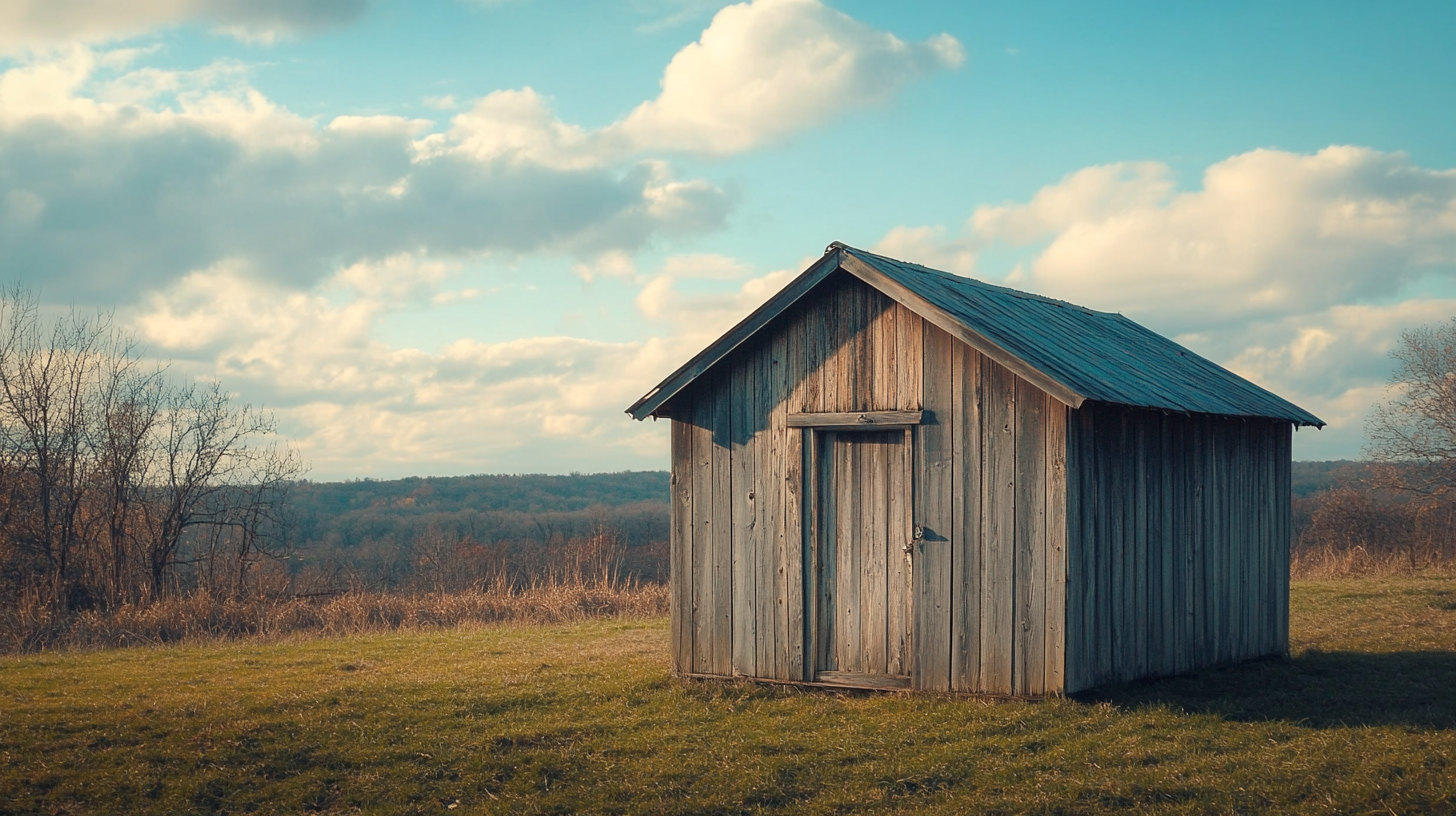Sorry, your browser is not supported. For a better experience, keep your browser up to date. Check here for latest versions
In recent years, the demand for outdoor sheds has surged, with a market report indicating that the global garden shed market is projected to reach $1.5 billion by 2027, growing at a CAGR of 4.5%. This increase can be attributed to the rising trend of home gardening and outdoor storage solutions, as homeowners seek to maximize their outdoor spaces. Choosing the perfect outdoor shed tailored to your specific needs can be a daunting task, given the plethora of sizes, materials, and styles available. Understanding the factors that influence your decision—such as purpose, durability, and design—can significantly enhance your outdoor experience. In this blog, we will delve into essential tips and insights to help you navigate the choices available, ensuring that your investment in an outdoor shed is both practical and aligned with your personal preferences.

When selecting the perfect outdoor shed, the first step is to thoroughly assess your storage needs. Understanding what you require can significantly simplify the decision-making process. A recent report highlighted that over 60% of homeowners look for sheds to store gardening tools and outdoor furniture, while others may seek additional space for hobbies or seasonal decorations. By identifying your specific storage needs, you can narrow down the features that your shed should have, such as shelving, ventilation, or workspace.
Moreover, the best storage sheds available in 2024 offer innovative solutions tailored to various needs. For instance, structures designed with modular shelving systems can optimize vertical space, critical for those with limited yard area. Industry data shows that adaptable storage solutions can increase usability, allowing 70% of users to maximize their shed's capacity effectively. Additionally, investing in weather-resistant materials is essential for longevity, particularly in regions prone to extreme weather conditions. These considerations will ensure that your outdoor shed functions effectively and enhances your property's utility.
| Discover the Secrets to Choosing the Perfect Outdoor Shed for Your Needs | |
|---|---|
| Storage Needs | Considerations |
| Tools & Equipment | Size and organization features |
| Garden Supplies | Ventilation and climate control |
| Outdoor Furniture | Accessibility and ease of access |
| Bicycles | Security features |
| Sports Equipment | Weatherproofing |
| Miscellaneous Items | Aesthetic design and materials |
When choosing the perfect outdoor shed, the material you select is paramount for both durability and aesthetics. Wood, metal, and resin each offer unique advantages that cater to different needs. According to industry forecasts, the global market for garden sheds is expected to reach $1.5 billion by 2027, with wood still maintaining a prominent share due to its natural aesthetic appeal and superior insulation properties. However, wood requires regular maintenance to prevent rot, which can be a consideration for homeowners seeking low-maintenance solutions.
Metal sheds, on the other hand, are lauded for their strength and longevity. They are resistant to pests and harsh weather, making them an ideal choice for commercial settings or harsher climates. The metal shed segment is anticipated to grow at a CAGR of 4.2% from 2025 to 2032, driven by an increasing demand for secure storage options in both residential and industrial applications. Additionally, new advancements in coatings have improved their rust resistance and aesthetic versatility, allowing for a variety of designs to suit different tastes.
Resin sheds are gaining traction due to their lightweight nature and resistance to fading, rusting, and rotting. Forecasts suggest a growing preference for resin among urban dwellers who need functional yet stylish solutions in limited spaces. As the market evolves, consumers will find that understanding the specific attributes of each material can lead to more informed choices when investing in outdoor storage solutions. By 2032, the trend indicates a balanced demand across all materials, with specific preferences shaped by regional climates and consumer lifestyles.

When it comes to choosing the perfect outdoor shed, sizing it right is paramount. Before you dive into the world of designs and materials, taking accurate measurements of your available space is essential. Start by identifying the location where you want your shed to be placed. Clear any obstructions and measure the width and depth of the area to ensure that your chosen shed will fit comfortably without compromising access or aesthetics.
Once you have these measurements, consider the intended use of your shed. Are you planning to store gardening tools, outdoor furniture, or even repurpose it as a workshop? Understanding your specific needs will help you determine the ideal shed size. For instance, if you require extra storage for larger items, opt for a shed with more vertical space and shelving options. Remember to account for clearance around the shed for access and maintenance. With these considerations in mind, you’ll be well-equipped to find a shed that complements your outdoor space and fulfills your requirements efficiently.
This chart illustrates the preferred shed sizes based on common yard dimensions. Choosing the right size can enhance functionality and aesthetic appeal in your outdoor space.
When it comes to selecting the ideal outdoor shed, striking a balance between design and functionality is crucial. Your shed should not only serve its practical purpose—be it for storage, gardening, or a workspace—but also enhance your outdoor space's aesthetic appeal. By considering the architectural style of your home and the surrounding landscape, you can choose a shed that harmonizes with your environment. Opting for colors and materials that complement your house can transform a simple storage solution into a stylish feature of your garden.
Furthermore, thoughtful design elements can elevate your shed's functionality. Features like windows and ventilation can improve air circulation and natural lighting, making it a more pleasant space to work in. Adding practical touches such as shelves, hooks, and workbenches can maximize the interior space, ensuring it remains organized and efficient. Ultimately, the perfect outdoor shed is one that reflects your personal taste while being tailored to your specific needs, creating a space that is both beautiful and incredibly useful.

When it comes to purchasing an outdoor shed, budgeting wisely is crucial to finding the best value without compromising quality. According to the American National Standards Institute (ANSI), a well-constructed shed can last up to 15 years if maintained properly, making it a long-term investment. Therefore, allocating your budget effectively is key to ensuring you get the most out of your purchase. Research suggests that the average cost of a quality shed ranges from $2,000 to $5,000, depending on materials and size, but it’s possible to find options that suit various financial plans with careful shopping.
One effective strategy is to compare materials and construction methods. For instance, wooden sheds often provide greater durability and customization options, yet they can be more expensive upfront. In contrast, resin or metal sheds tend to be lower in cost, yet may lack the aesthetic appeal of wood. A report from the Home Improvement Research Institute indicates that a premium shed can yield a return on investment of approximately 75% to 85% upon resale, underscoring the importance of considering long-term value rather than just initial price. By evaluating these factors and conducting thorough price comparisons, buyers can secure a shed that fulfills their needs while staying within budget constraints.